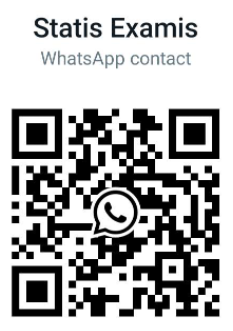Navigation » List of Schools » Glendale Community College » Accounting » Accounting 120 – Computerized Accounting Systems » Fall 2022 » Final Exam
Question #1
A All of the choices are correct
B Inventory items
C Non-inventory items
D Service items
Question #2
A Debit Accounts Payable, Credit Checking account
B Debit Accounts Payable, Credit Expense account
C Debit Expense account, Credit Accounts Payable
D Debit Checking account, Credit Accounts Payable
Question #3
A Enter bills
B Create invoices
C Sell products
D Receive payments
Question #4
A Before receiving a service
B After receiving a service
C At the time of providing a service
D When submitting a purchase order
Question #5
A Increases an Expense account and increases the Accounts Payable account
B Decreases an Expense account and decreases the Checking account
C Decreases the Accounts Payable account and decreases the Checking account
D Increases the Accounts Payable account and increases the Checking account
Question #6
A Customers purchasing goods
B Leasing companies
C Tax agencies such as the IRS
D Suppliers of inventory and supplies
Question #7
A Recorded using the Create Sales Receipts window
B Recorded using the Enter Bills window
C Recorded using a Create Invoices window
D Recorded in a Credit Card Sales window
Question #8
A Customers section of the Home Page
B Customers Menu
C Vendor section of the Home Page
D Customers Center
Question #9
A Make Deposit > Customer & Job Name
B Create Sales Receipt > Record Deposits
C Create Invoice > Customer Payment > Customer & Job Name
D Receive Payment > Customer & Job Name
Question #10
A Only partial payments received from customers
B Funds received from customers but not deposited in the bank
C Petty Cash funds
D Funds the company owes vendors
Question #11
A Make Deposit
B Create Invoices
C Create Sales Receipts
D Receive Payments
Question #12
A Collections Reports
B Accounts Receivable Aging Summary
C All of the choices are correct
D Customers with Open Invoices
Question #13
A Outstanding checks
B Errors
C Checks that have cleared the bank
D Deposits recorded by the bank
Question #14
A Purchase orders
B Invoices
C Accounts
D Checks
Question #15
A To conserve resources, it is best if the owner uses one Checking account for both personal and business purposes
B To maintain more consistent records, it is best if the owner maintains a separate personal Checking account, but both the owner’s personal Checking and business Checking accounts are listed in the Chart of Accounts
C To maintain separation between the personal and business accounting records, the owner’s personal Checking account should not be used to pay bills for the business and should not be listed in the business’ Chart of Accounts
D None of the choices are correct
Question #16
A Sales Taxes
B Legal Services
C None of the choices are correct
D Rent Payments
Question #17
A Reduces the liability (debit) and the checking account (credit)
B Records an expense (debit) and the obligation to pay later (credit)
C Reduces the liability (credit) and the checking account (debit)
D Records an expense (credit) and the obligation to pay later (debit)
Question #18
A Enter Bills
B Receive Payments
C Make Deposits
D Pay Bills
Question #19
A Deposits in transit
B Both deposits in transit and outstanding checks
C Interest earned
D Outstanding checks
Question #20
A Credited
B None of the choices are correct
C Debited
D Reconciled
Question #21
A Is located directly on the Company section of the Home page
B Records payments and deposits to the Checking account
C Keeps track of company deposits only
D Lists all accounts and their account numbers
Question #22
A Record inventory received
B Create invoice
C Enter bills
D Pay sales tax
Question #23
A Record payments received from customers
B Enter bills
C Make deposit
D Pay employees
Question #24
A All of the choices are correct
B Vendor List
C Customer List
D Item List
Question #25
A Pay Bills
B Invoice
C Purchase Order
D Check
Question #26
A Employees
B Customers
C Banking
D Vendors
Question #27
A Vendors
B Customers
C Banking
D Company
Question #28
A To calculate expenses.
B To identify owner’s equity.
C To calculate income.
D To track information necessary for the accounting system.
Question #29
A Employee Expense Account
B Purchase Orders Account
C Inventory Account
D Accounts Payable Account
Question #30
A Summarizes the results of a company’s operations, listing income and expenses
B lists a company’s assets
C lists the accounts and account numbers
D Summarizes what a company owns and what it owes
Question #31
A Utilities
B Rent
C Accounts Receivable
D Advertising
Question #32
A Temporary accounts
B None of the choices are correct
C Permanent accounts
D Equity accounts
Question #33
A Retained Earnings
B Expense
C Fixed Asset
D Owner’s Equity
Question #34
A Enter bills
B Pay sales tax
C Create invoices
D Record inventory received
Question #35
A Create Invoices
B Receive Inventory
C Create Estimates
D Receive Payments
Question #36
A Icon Bar
B All of the choices are correct
C Menus
D Home Page
Question #37
A Time and Expenses
B Bills
C Jobs and Estimates
D Sales and Customers
Question #38
A All of the choices are correct
B None of the choices are correct
C Balance Sheet
D Profit & Loss
Question #39
A Create Purchase Order > Receive Payment > Make Deposits
B Create Purchase Order > Receive Inventory > Enter Bill > Pay Bill
C Create Invoice > Receive Payment > Record Deposits
D Create Invoice > Receive Inventory > Pay Bill > Record Deposits
Question #40
A Materials Cost
B Inventory Sold
C Items Sold
D Cost of Goods Sold
Question #41
A QBB
B QBW
C QBM
D QBX
Question #42
A Bring account balances up to date at year end
B Close temporary accounts at year end
C All of the choices are correct
D Close permanent accounts at year-end
Question #43
A Accounts Receivable
B Checking
C Accounts Payable
D Undeposited Funds
Question #44
A Fiscal or calendar year
B Industry type
C Federal ID Tax number
D Company address
Question #45
A Pay employees
B Record deposits
C Enter bills
D Record payments received from customers




